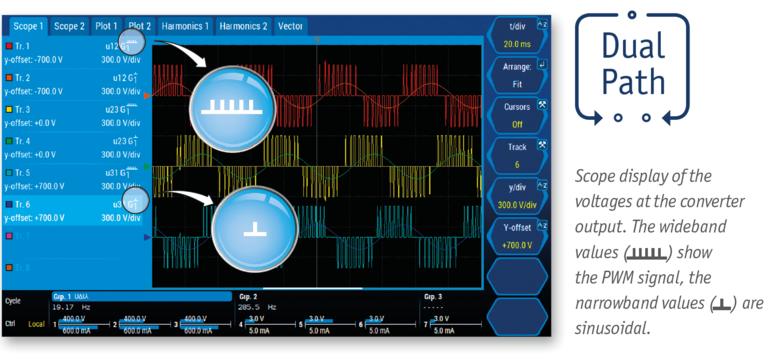Electric drive systems
More than half of the electrical energy generated worldwide is converted into mechanical motion, and the importance of electrical drives for transport and movement is growing steadily. While outdated speed controllers are afflicted with losses of up to 40 %, modern, frequency-controlled systems can achieve efficiency levels of over 95 %. These are frequency converters that use pulse width modulation to control the speed of the motor with hardly any losses. The objective is to optimally adjust the converter and motor to one-another, in order to achieve as high an overall efficiency as possible. Simultaneously measuring the input power, the intermediate circuit, and the output power of the converter as well as the mechanical power given out by the motor is anything but trivial. In addition to the integration of sensor technology (wideband current sensors for high currents, if necessary voltage divider, precise speed
and torque transmitters), the device must meet the challenge of measuring the very steep-flanked signals at the converter output. This environment is often described as harsh, not merely from a EMC point of view.
Of course the key question in the analysis of electrical drive systems is: which part of the electrical energy at the converter output relates to the torque-relevant basic frequency of the motor, and which part to the remaining frequency range, particularly the harmonic spectrum? To give an accurate answer, it has long been necessary to perform two separate measuring procedures: one measurement without filters to establish the wide-band power and another
measurement of a filtered signal to determine the power at certain frequencies or a subsequent FFT analysis to measure the harmonic spectrum.
On the one hand, this procedure was time-consuming, and on the other hand, it could not always be assumed that exactly the same conditions were present during the second measurement, as in the first.
The innovative DualPath architecture of the LMG670 provides all of the required results simultaneously in a single measurement, with maximum precision, and the widest frequency range on the market – free from aliasing effects.



